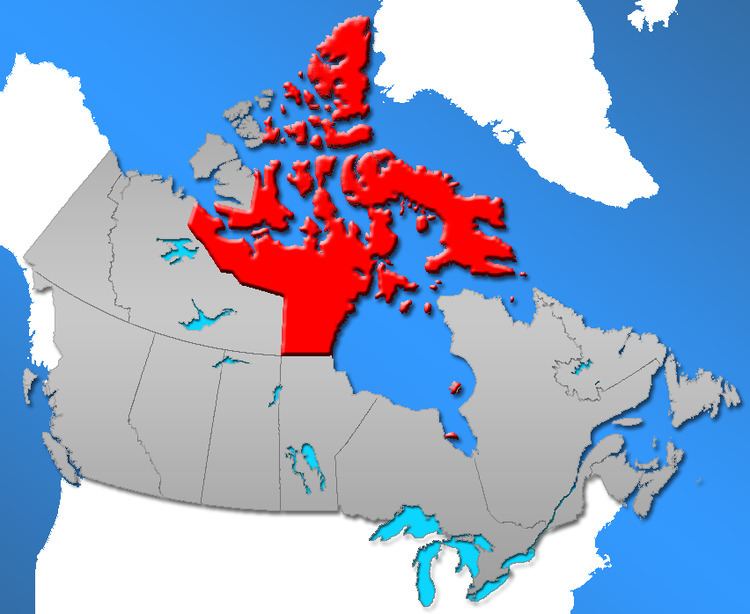 | ||
Nunavut is a territory of Canada. It has a land area of 1,877,787.62 km2 (725,017.85 sq mi). In the 2016 census the population was 35,944, up 12.7% from the 2011 census figure of 31,906. In 2006, the latest year for which figures are available, 24,630 people identified themselves as Inuit (84.1% of the total population), 100 as North American Indian (0.3%), 130 Métis (0.4%) and 4,410 as non-aboriginal (15.1%).
Contents
Nunavut's small and sparse population makes it unlikely the territory will be granted provincial status in the foreseeable future, although this may change if the Yukon, which is marginally less populous, becomes a province.
Language
The 2006 Canadian census showed a population of 29,474.
Of the 29,025 singular responses to the census question concerning 'mother tongue' the languages most commonly reported were:
There were also 260 responses of both English and a 'non-official language' (mainly Inuktitut); 20 of both French and a 'non-official language; 20 of both English and French; and about 140 people who either did not respond to the question, or reported multiple non-official languages, or else gave some other unenumerated response. Only English and French were counted as official languages in the census. Figures shown are for the number of single language responses and the percentage of total single-language responses.
Religion
The dominant religion in Nunavut is Christianity; Catholicism, Anglicanism and Pentecostalism are highly prevalent.
Traditionally, Inuit shamanism has always been a taboo subject in Inuit culture, not openly talked about. Shamans didn't make it known they were one, but the group or clan they were a part of knew.
Migration
While there is some internal migration from the rest of Canada to Nunavut (usually on a temporary basis), there is very little external migration from outside of Canada to Nunavut.
The 2006 census counted a total of only about 450 immigrants in Nunavut, including about 80 from the United Kingdom, about 40 each from the United States and the Philippines, about 30 from Germany, about 20 each from China and India, and just over 10 each from Jamaica and South Africa.
A total of 4,940 people moved to Nunavut from other parts of Canada between 1996 and 2006 while 5,615 people moved in the opposite direction. These movements resulted in a net influx of 355 from Newfoundland and Labrador; and a net outmigration of 355 to Alberta, 295 to the Northwest Territories, 235 to Ontario and 160 to Quebec. There was a net outmigration of 150 francophones from Nunavut to Quebec during this period. (All net inter-provincial and official minority movements of more than 100 persons are given).
